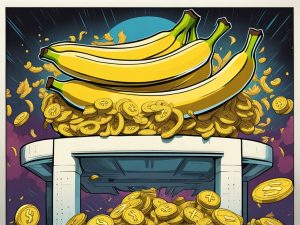An Unknown Individual Drains Over $11 Million from SafeMoon Liquidity Pools
An unknown individual has drained more than $11 million in liquidity from various pools associated with the controversial cryptocurrency project SafeMoon. This incident has sparked speculation about a potential connection to SafeMoon’s ongoing bankruptcy proceedings.
Unusual Activity Detected by Cyvers Alert
Cyvers Alert, a blockchain security company, has identified unusual activity surrounding SafeMoon. They have noticed a recent address labeled “approveLiquidityPartner” that moved approximately $11.2 million.
Suspicious Transactions Amidst Bankruptcy
The assets involved in these transactions span multiple blockchain networks, including Ethereum, Binance Smart Chain, and Polygon. The cryptocurrencies affected include USDC, USDT, Shiba Inu, LINK, Wrapped BTC, and Pepe.
According to Etherscan, the address now holds around $1.6 million worth of various cryptocurrencies such as Wrapped BTC, USDT, Pepe, Chainlink, and others.
Impact on SafeMoon’s Token Price
Following this news, the price of SafeMoon’s SFM token dropped to $0.00003226. The timing of the liquidity drain raises questions about its potential connection to SafeMoon’s bankruptcy case.
SafeMoon’s Bankruptcy Case
In December 2023, SafeMoon filed for bankruptcy protection in the US Bankruptcy Court in Utah. The company disclosed liabilities of up to $500,000 while its assets were valued at over $10 million.
On January 19, SafeMoon announced the decommissioning of its SafeMoon Wallet without specifying a date.
The bankruptcy filing was preceded by several setbacks, including a $9 million exploit in March 2023 that significantly reduced SafeMoon’s liquidity pool. In November of the same year, the US Securities and Exchange Commission filed charges against SafeMoon and its executives for fraud, unregistered securities offerings, and money laundering. Serious allegations of top executives misusing over $200 million resulted in the arrest of CEO John Karony and Chief Technology Officer Thomas Smith.
The original article can be found here.


 By
By
 By
By
 By
By

 By
By
 By
By